Curious Questions: Why do leaves change colour in Autumn? And why do some go yellow while others are red, purple or brown?
The riotous colours on the trees around us are one of the highlights of the year — but why do leaves change colour in Autuumn? Mark Griffiths explains.
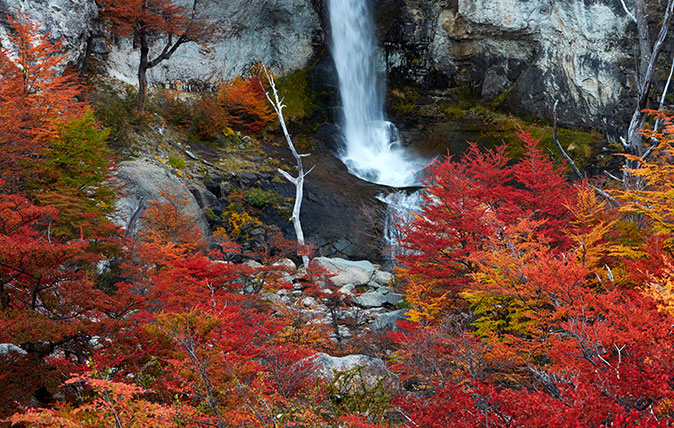
Nature has few rites of passage more impressive than autumn colour. Chiefly a phenomenon of plants found in cool or temperate climes, the transition begins as daylight hours decrease and temperatures drop, signalling that it’s time to stop growing and manufacturing food.
Why does that happen? There are actually two separate questions here. First, why leaves fall off at all. And second, why do they change colour before they do.
Why do leaves fall off in the first place?
The key factories responsible for food-production are leaves, which harvest the energy in light and use it to make carbohydrates. If they kept their foliage, many plants would find this work unsustainable in the dark months.
What’s more, they’d be unable to prevent or make good the damage likely to be done to their leaves by freezes, snow, wind, too little or too much water, pests and diseases.
They find it far more advantageous to disrobe temporarily; to be deciduous. From late summer onwards, cells at the junction of leaf and stem begin to multiply. They form an ‘abscission layer’, which us a pending fracture or cut-off point that’s the plant equivalent of the dotted line.
Eventually, these cells will become corky and break apart, with the result that the foliage is shed.
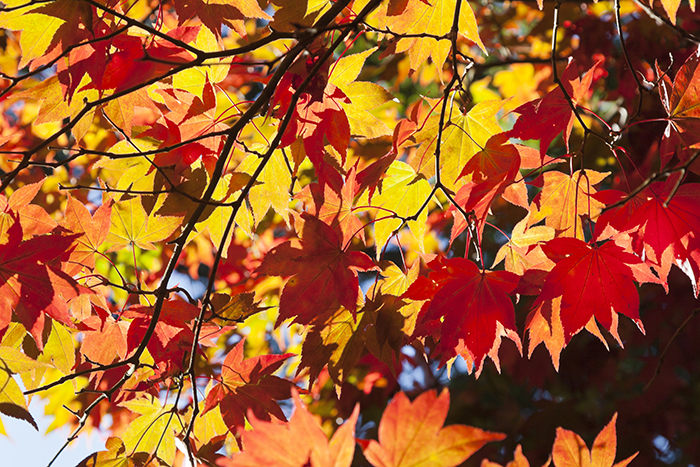
Why do leaves change colour before they drop off?
Prior to the tree starting to drop leaves, they gradually congest the vessels that service the leaf, diminishing its supply of water and nutrients. Without that supply the leaf can no longer produce or maintain chlorophyll, the pigment that makes it green and which is instrumental in its light capture and sugar manufacture.
Sign up for the Country Life Newsletter
Exquisite houses, the beauty of Nature, and how to get the most from your life, straight to your inbox.
Chlorophyll isn’t the only pigment in a leaf, however. Ever since its emergence, the leaf has contained two further pigments, both with ancillary roles in harnessing light: xanthophyll and betacarotene. In the growing season, however, the hues of both are obscured by the dominant green of chlorophyll.
Now, as that hue disperses, they remain, revealed in their true colours. Xanthophyll gives us the yellows of autumn foliage and betacarotene its oranges.
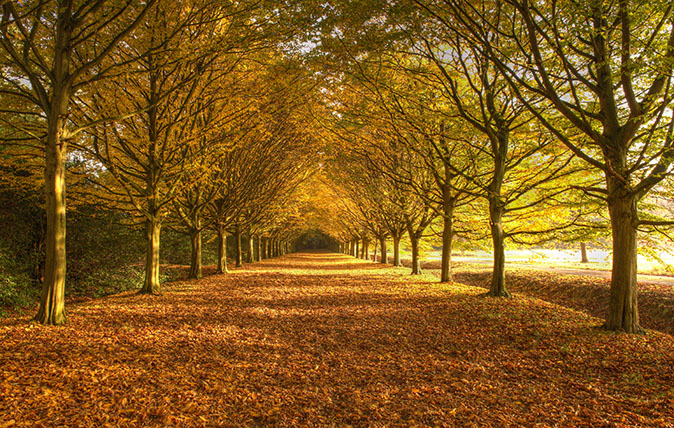
If Xanthophyll gives us yellow leaves and betacarotene orange ones, how do some leaves turn red or even purple?
As the season progresses, nutrients and compounds are resorbed, exported from the leaf to the stem and elsewhere for safe storage. One of these compounds is phosphate, which is essential in converting the sugars manufactured from light into substances of use to the plant.
As phosphate decreases in the leaf, so the sugars that remain become less and less able to undergo that conversion, but they still break down and this produces anthocyanins, the red and purple pigments that give us the richest and most vivid autumn colours of all.
It seems these confer some strategic advantage. Why else would plants preparing for winter go to the trouble of engineering them instead of converting and absorbing all possible sugars or cutting their losses and dumping their leaves?
Botanists debate what that advantage might be. Likely explanations are that anthocyanins deter pests in search of a host for the winter or that they protect from the elements leaf tissues that have been rendered vulnerable by senescence, but still have work to do and resources to export.
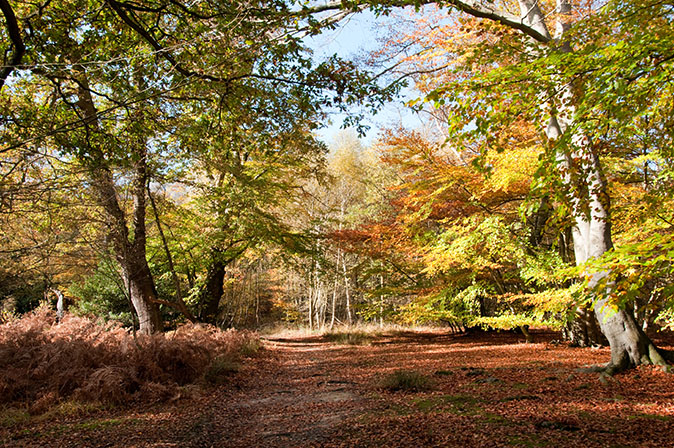
Why do the leaves end up turning brown?
The final addition to the palette is tannins. Enduring after the other colours have faded and the leaf has transpired its last, these produce the browns that are the livery of death and decay.
However, tannins are also present in the growing season and they become evident as soon as the chlorophyll starts disappearing. Thereupon, their effects may blend with those of other pigments, making some of autumn’s most painterly tinctures: brackenish sepia and tortoiseshell, mushroomy buff and peach-tinted parchment, burnished copper and ferrous red, bitter chocolate and black cherry, caramelised bronze and honeyed old gold.
What decides whether a leaf becomes red, yellow, orange, purple or some other colour?
After innate chemistry, environmental conditions are the main determiners of autumn leaf colour. Strong sunlight greatly enhances the production of anthocyanins, as do nighttime chills, but early frosts curtail it.
Rough winds damage leaves and accelerate their decline and fall – or strip them outright. Damp gloom and drenching rain disrupt their change, dulling and diluting their hues, and making them prone to premature decay.
Stresses such as summer drought, impoverished or ill-suited soils and constricted roots cause leaves to turn and drop early. Scarcely more favourable is sustained wet weather in August and September. This encourages late growth and foliage that’s newly minted or still thrusting as autumn sets in. New growth seldom colours so well as older and ripened branches. In cultivation, over-prolonged feeding and watering can wreck the show for the same reason.
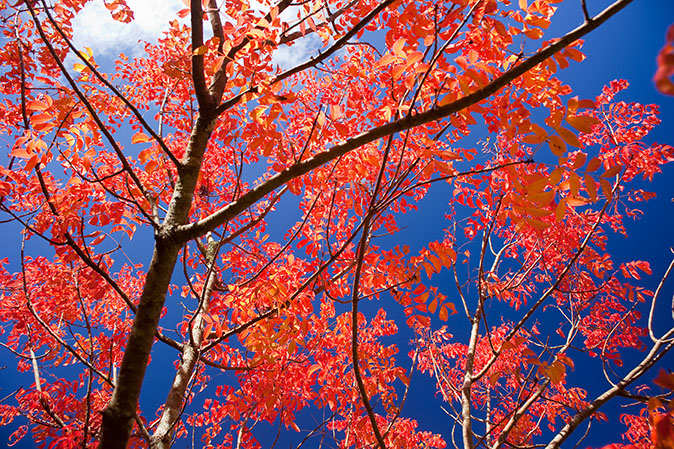
What are the best conditions for autumn colours to burst through?
The optimum conditions are a lush growing season followed by an autumn that is dry, tranquil, warm and sunny by day and cool but not freezing by night. There are vast regions where this is the norm, notably in North America and North-East Asia. They’re also home to a multitude of native trees and shrubs that colour brilliantly.
Their transition is so dependably glorious that it’s fixed in consciousness and calendar as a national natural event, inspiring mass celebratory excursions such as the ‘leaf-peeping’ tourism of the New England fall and the momijigari (‘maple hunts’) of the Japanese autumn.
Why are many native British trees not as colourful as imported varieties?
Great Britain is not so favoured by accidents of history and geography as many other parts of the world. In North America and the Far East, a great diversity of species was able to migrate south to escape advancing ice sheets and then to reoccupy its old territory as the climate warmed again.
Among these were the ancestors of today’s autumn exhibitionists. Our flora was once rich in them, too, but their opportunities for refuge and return were vastly poorer.
Nonetheless, some of our native back-end beauties stood their ground or regained it, most notably beech, wild cherry, rowan, field maple, spindle, guelder rose and the dogwood Cornus sanguinea. These are reliably breathtaking, although their performance still depends on site, weather and genetic variability (in that some individuals or forms of a species colour better than others).
More prone to those factors, and so less consistent, are the wayfaring tree, briars, brambles, bilberry, alder buckthorn, ash, birch, hawthorn, blackthorn and apples both domestic and crab – not that they’re any less ravishing when at their best. Personally, I’d prefer a mellow Buckinghamshire beech to New England’s fiery finest any bright autumn day.
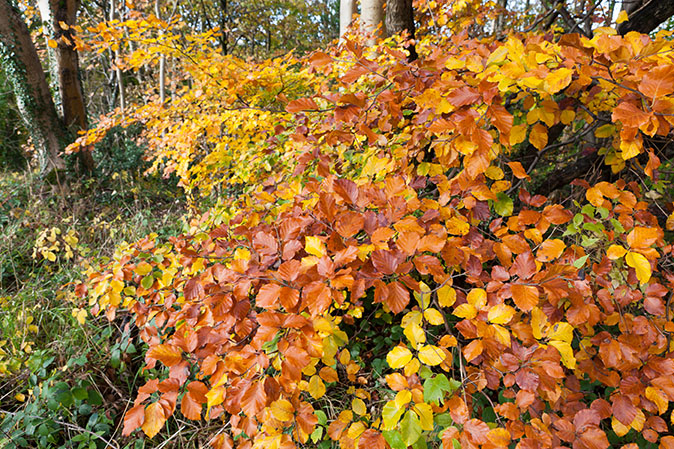
Similarly, when our terrain is at its drabbest, a chance encounter with a lone spectacular tree or shrub, or with a small but riotous assembly in a clump or hedgerow, can move me more than the landscapes entirely mantled in scarlet that I’ve visited overseas.
But there’s no escaping it: our wild autumn foliage colour tends to be patchy and piano by comparison with that of those other regions and all too often spoiled by temperamental weather. This, I suspect, is why leaf colour played so little part in our image of autumn for so long. Yes, Shakespeare writes ‘Three beauteous springs to yellow autumn turned’ in Sonnet 104, but, for him, as for other authors, the season primarily betokened fecundity, fruiting and plenty. It also symbolised maturity, a bittersweet perfection when related to us in that it bore experience’s marks and was destined to fade, hence John Donne’s Elegy IX: ‘Nor spring nor summer beauty hath such grace/As I have seen in one autumnal face.’
How did we get so much autumn colour in Britain?
Starting in the 17th century, we added something to the native trees’ diet of harvest and melancholy. It was still all to do with ripeness and evanescence, but it entailed our relishing those processes for their own sake, as connoisseurs of colour. We discovered autumn foliage and, eventually, made it a key component of our garden art, becoming painters with plants.
That discovery began with the introduction of North American flora to English horticulture. Consider just a few of the species established in gardens by the Tradescants, father and son, between 1620 and 1660. In autumn, the foliage of Parthenocissus quinquefolia turns to shades of crimson and coral and Acer rubrum burns bright in scarlet and flame. Taxodium distichum becomes a fog of foxy red and Liriodendron tulipifera a luminous tower of ochre and gold.
They do all this even when parted from their native climes and exposed to the worst vicissitudes of ours. Imagine their original impact on our sensibilities. First, panic: ‘What’s happening to my New World treasures?’ Then, expert reassurance: ‘Don’t worry. They do the same year after year in Virginia.’ Finally, joy that, rather than going quietly into the dark months, the garden or park is putting on a finale more flamboyant than anything to be seen in spring or summer.
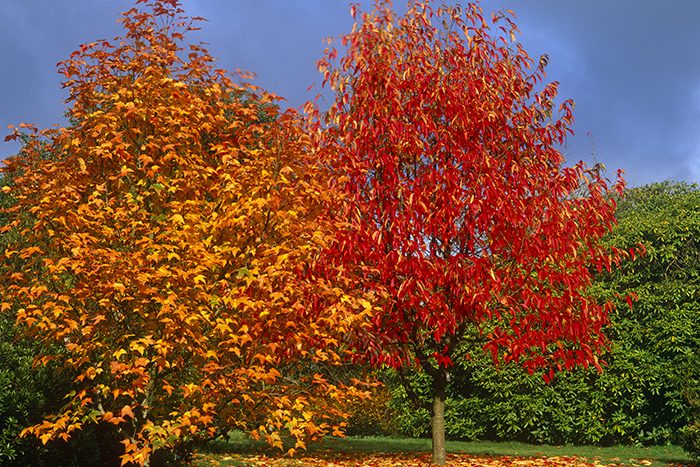
Which gardeners led the charge to make our autumns more colourful?
Not long after those first imports took root, England’s gardening elite were creating layouts devoted to trees and shrubs – so began our great arboretum tradition. Paramount in these plantings were new introductions from America and none more so than those that promised autumn colour.
One noted connoisseur was Henry Compton, Bishop of London, whose Fulham garden welcomed various species collected by John Banister in Virginia. A consignment of novelties sent to him in 1683 included Liquidambar styraciflua, today one of the most highly valued and widely used autumnal trees of all.
North American introductions greatly increased in variety and quantity come the 1730s, when Peter Collinson, a London-based merchant with a passion for plants, began to fund the collecting activities of the pioneering botanist and explorer John Bartram of Philadelphia. Establishing a model that would continue into the 20th century, Collinson led a syndicate of patrons, disseminating Bartram’s finds among them and passing their backing to him.
By the 19th century, British gardeners had the hang of autumn: we understood that, in performing brilliantly when young and small, and soon available in a multitude of leaf forms and colours, this exotic species spurred us to develop the art of creating incendiary effects in confined spaces and shrubberies, on rock gardens and beside water.
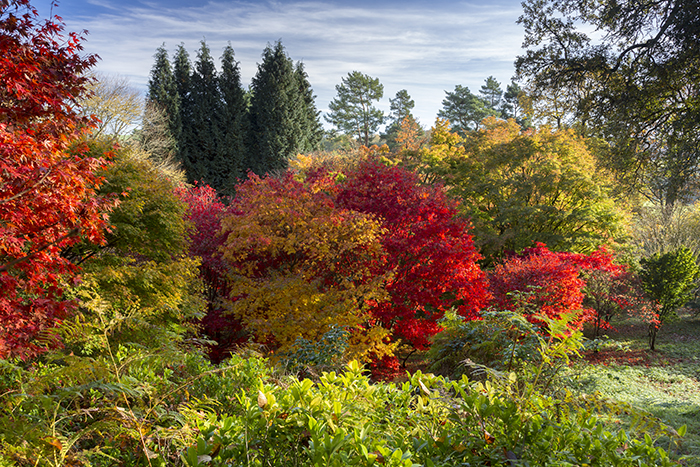
In this, we took lessons from the tree’s horticultural use in its native country. When that fashion passed, the Japanese maple not only remained with us, but became more popular than ever. Like the highlights of the ‘American thickets’ created in the previous century, it was absorbed into our general garden-plant repertoire.
Combined, these glories enabled dazzling compositions, such as the lakeside plantings installed early in the last century by A. G. Soames at Sheffield Park in East Sussex. Here, for example, the Far East meets the east coast as Acer palmatum flourishes beside Taxodium distichum, but the harmony that they strike somehow seems as British as the fronds of our native Osmunda regalis that turn russet around their feet.
Our range of trees and shrubs for autumn foliage colour continues to expand and, increasingly, designers and planners plant with this season in mind. Summer’s end is eagerly anticipated in ever more gardens and once stygian townscapes are now brightened and warmed by Amelanchier, Liquidambar, Pyrus calleryana and Fraxinus Raywood.
Perhaps the most welcome development is the selection of brilliantly colouring forms of indigenous species and their mass planting in wild or informal public spaces and alongside major roads. Between the garden and nature, autumn is becoming our most magical season of all.
Mark Griffiths is editor of the New Royal Horticultural Society Dictionary of Gardening. This article originally appeared in Country Life in November 2016.
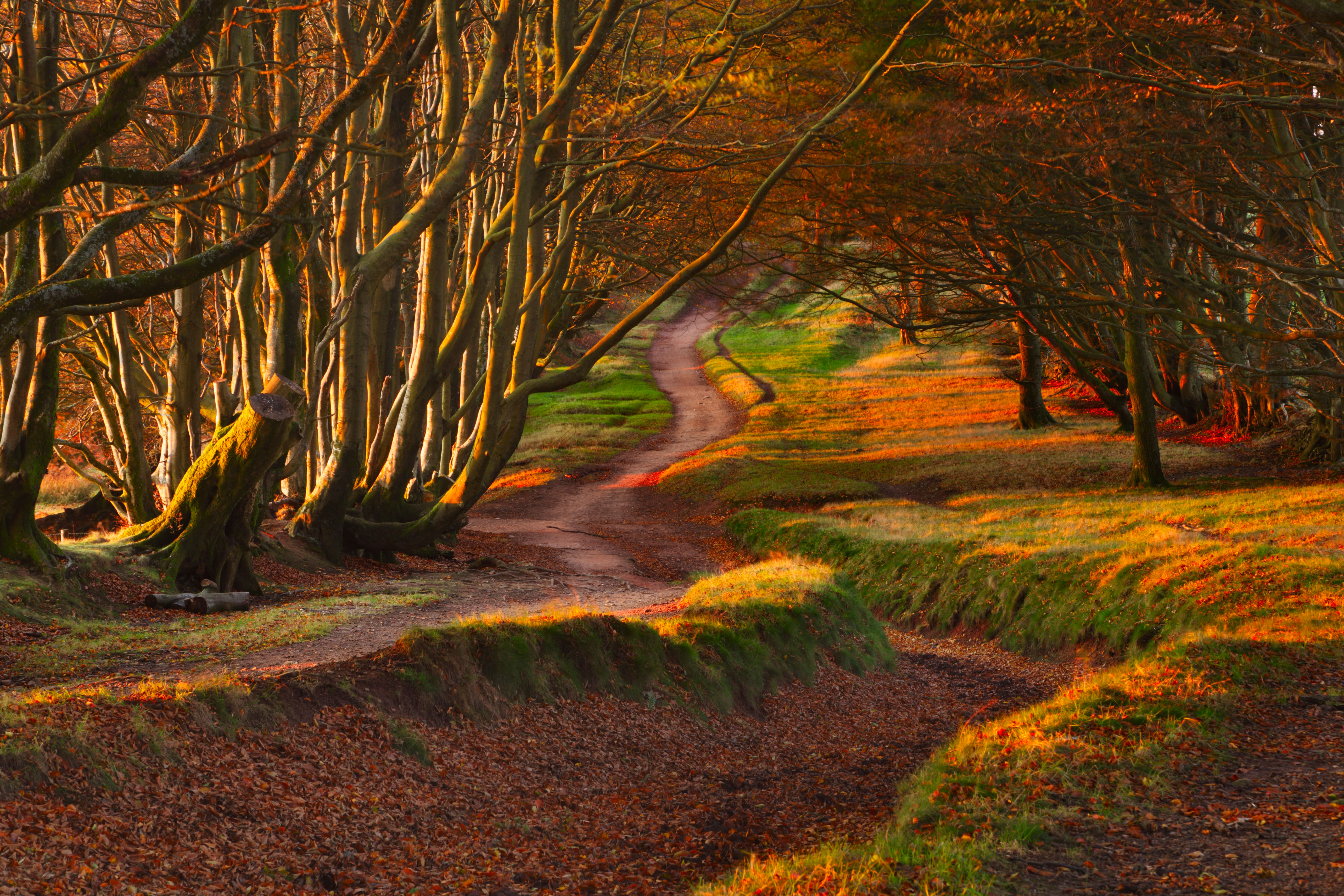
Beech trees: A complete guide
The beech tree is one of the finest sights in British woodland: effortlessly tall and graceful, offering year-round colour in
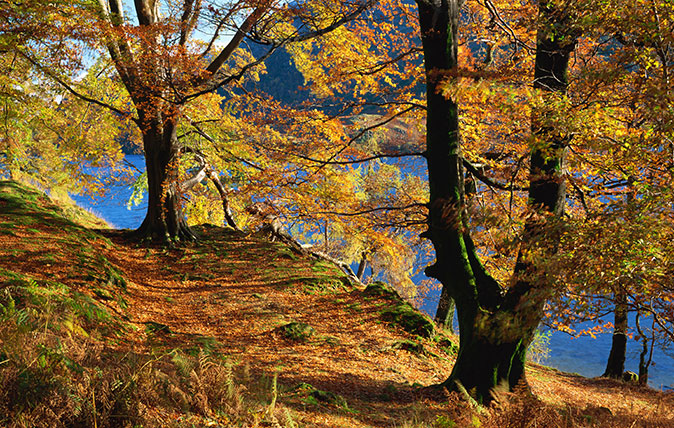
Credit: Alamy
10 perfect photographs that will remind you why you love Autumn
Country Life celebrates some of the most evocative images of autumn.
-
 Why British designers dream up the most desirable hotels
Why British designers dream up the most desirable hotelsWhen it comes to hotel design, the Brits do it best, says Giles Kime.
By Giles Kime Published
-
 The five minute guide to 'The Great Gatsby', a century on from its publication
The five minute guide to 'The Great Gatsby', a century on from its publication'The Great Gatsby' sold poorly the year it was published, but, in the following century, it went on to become a cornerstone of world literature.
By Carla Passino Published
-
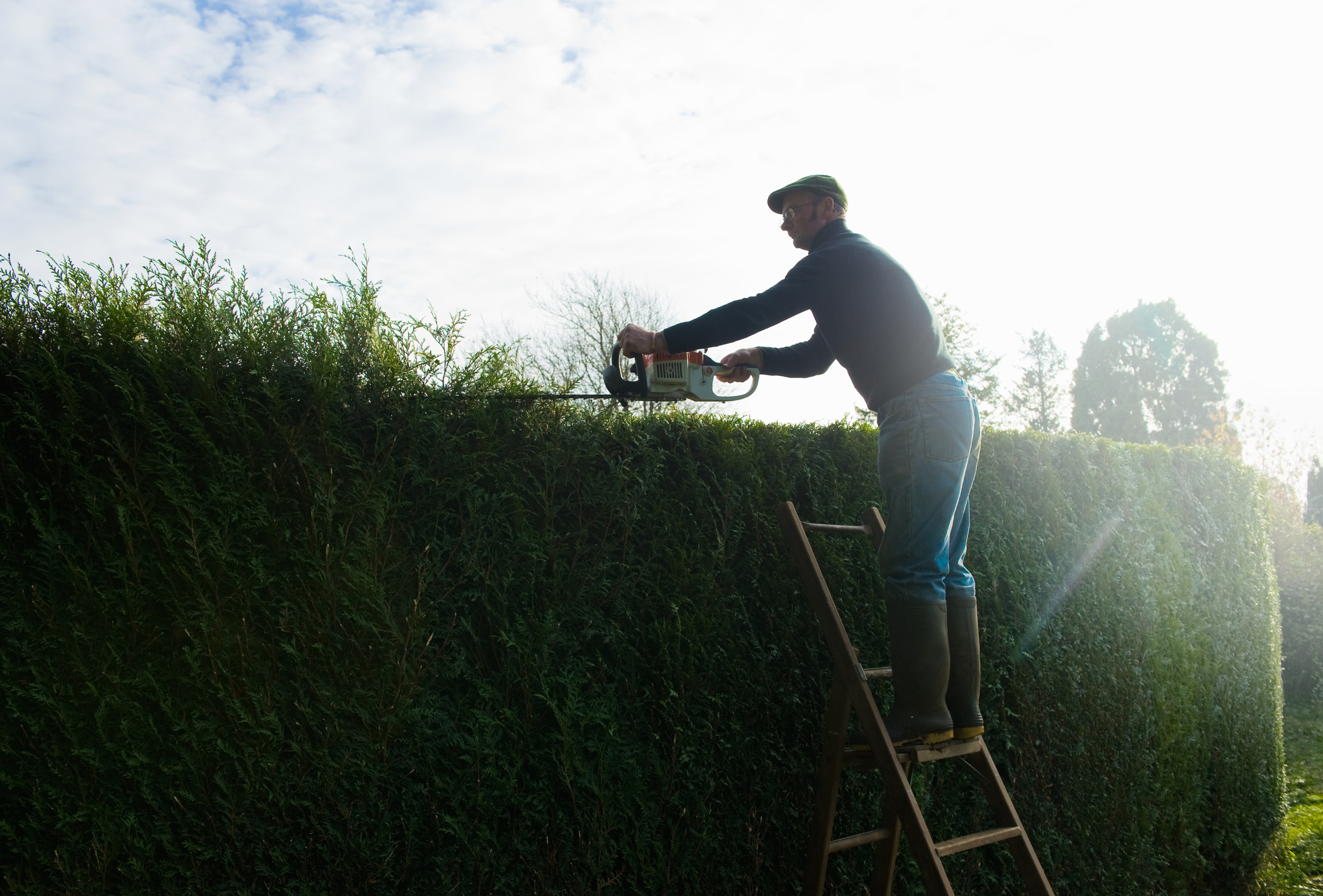 Curious Questions: How did the Leyland Cypress go from botanical accident to taking over the world?
Curious Questions: How did the Leyland Cypress go from botanical accident to taking over the world?The near-ubiquitous Leyland Cypress — or leylandii — is an evergreen with an extraordinary back story. Martin Fone explains.
By Martin Fone Published
-
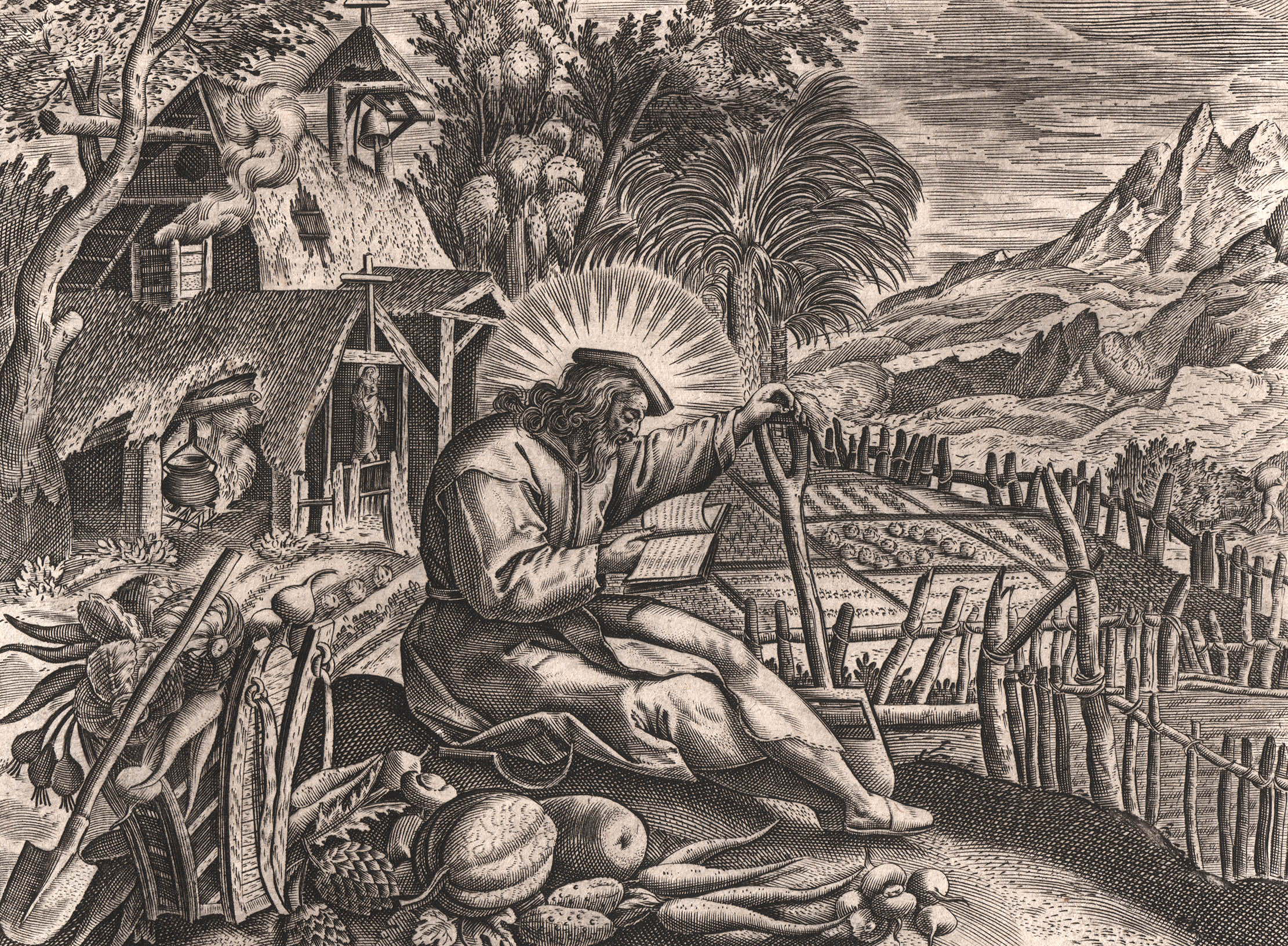 Curious Questions: What is a garden hermit?
Curious Questions: What is a garden hermit?Martin Fone takes a look at the curious history of the hermits who spent years living happily in the grounds of country houses, perhaps the ultimate garden folly.
By Martin Fone Published
-
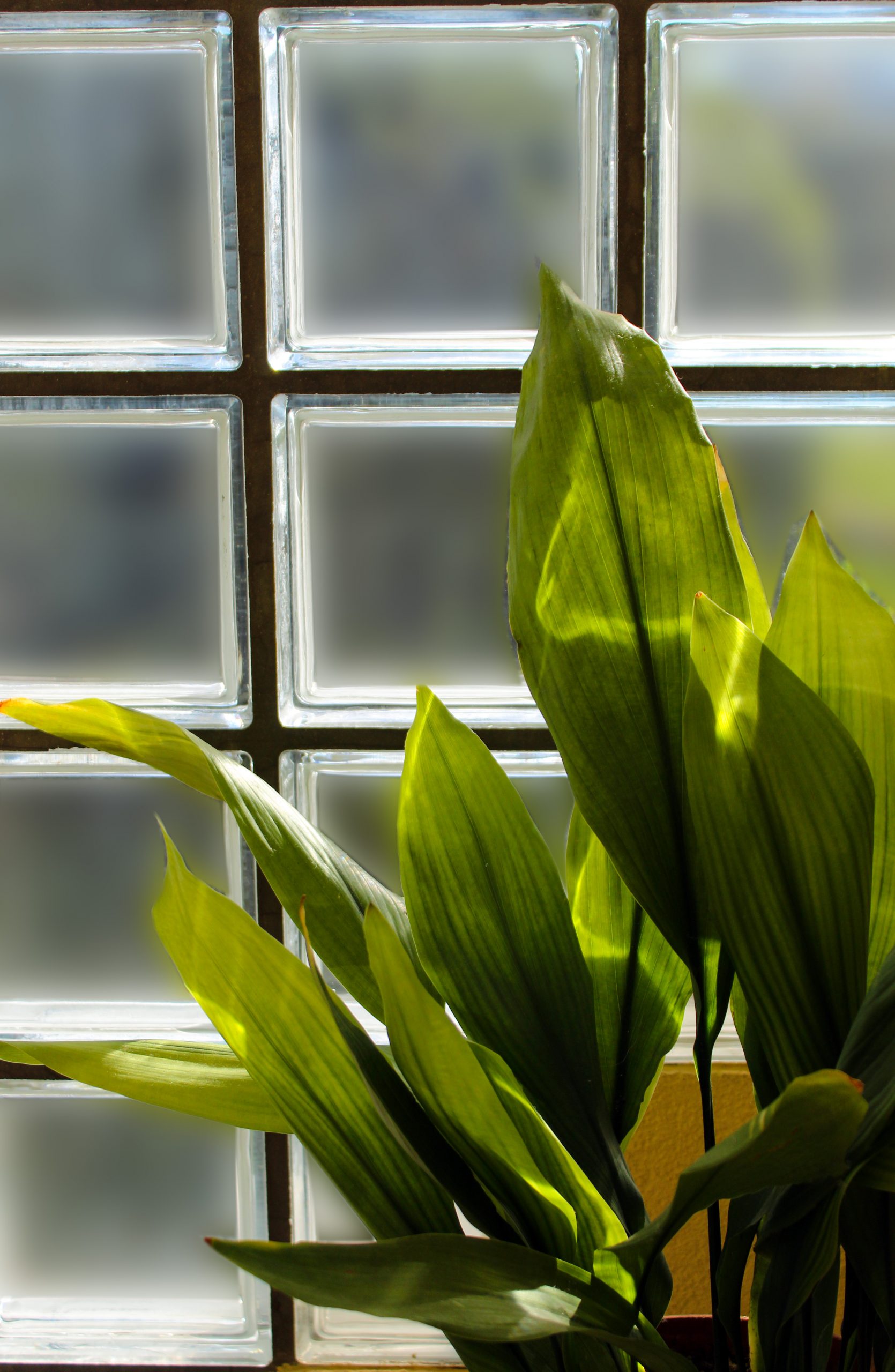 Curious Questions: Will the aspidistra ever fly again?
Curious Questions: Will the aspidistra ever fly again?The aspidistra was once the most popular of all houseplants in Britain, but these days they're barely seen. Why did that happen, asks Martin Fone, and can it make a comeback?
By Martin Fone Published
-
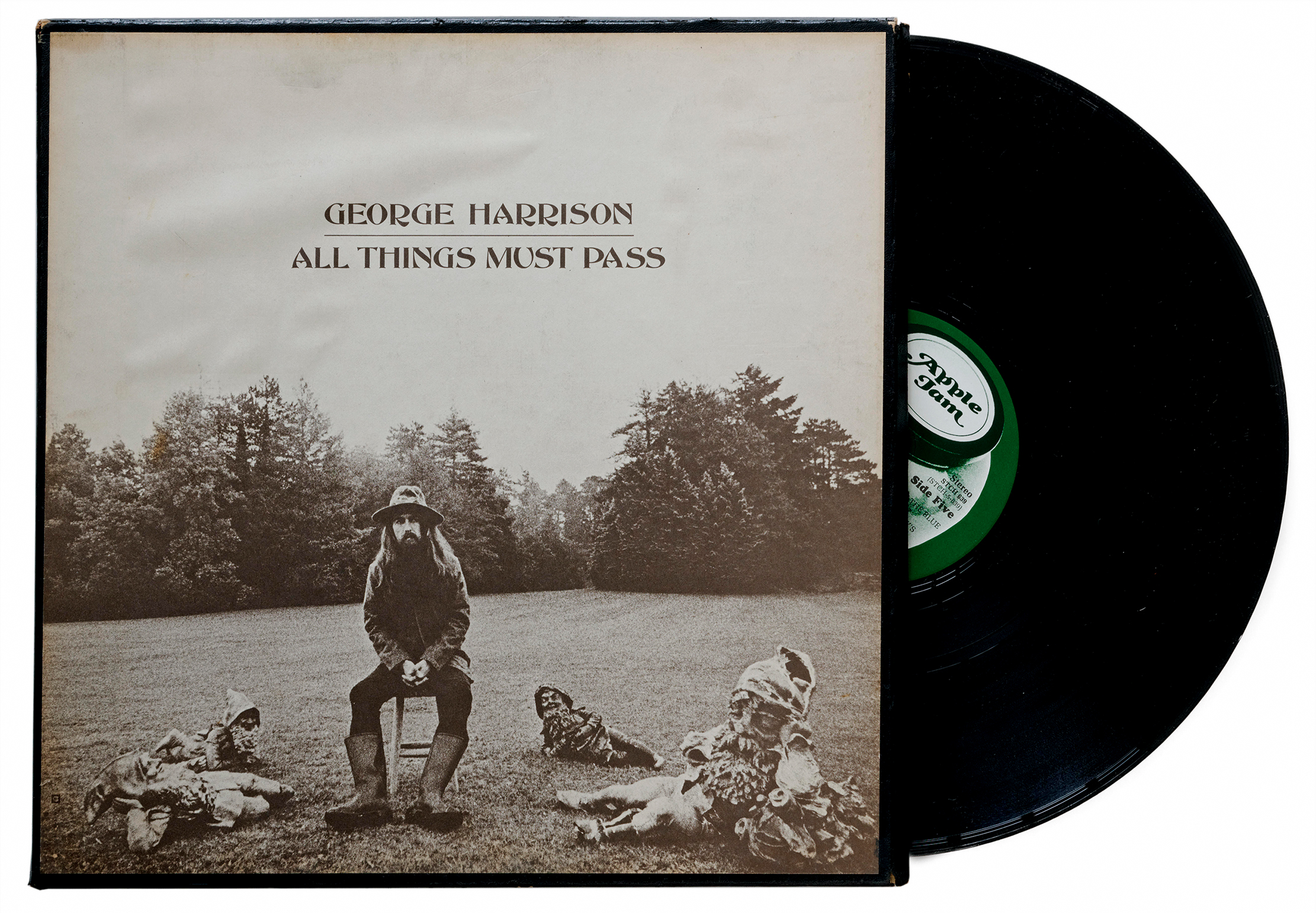 Curious Questions: How did garden gnomes take over the world — and even The Queen's private garden?
Curious Questions: How did garden gnomes take over the world — and even The Queen's private garden?Vertically challenged, bearded and rosy-cheeked, cheerful gnomes might make for unlikely cover stars, but — says Ben Lerwill — they’ve long graced books, album covers and even The Queen’s private garden.
By Ben Lerwill Published
-
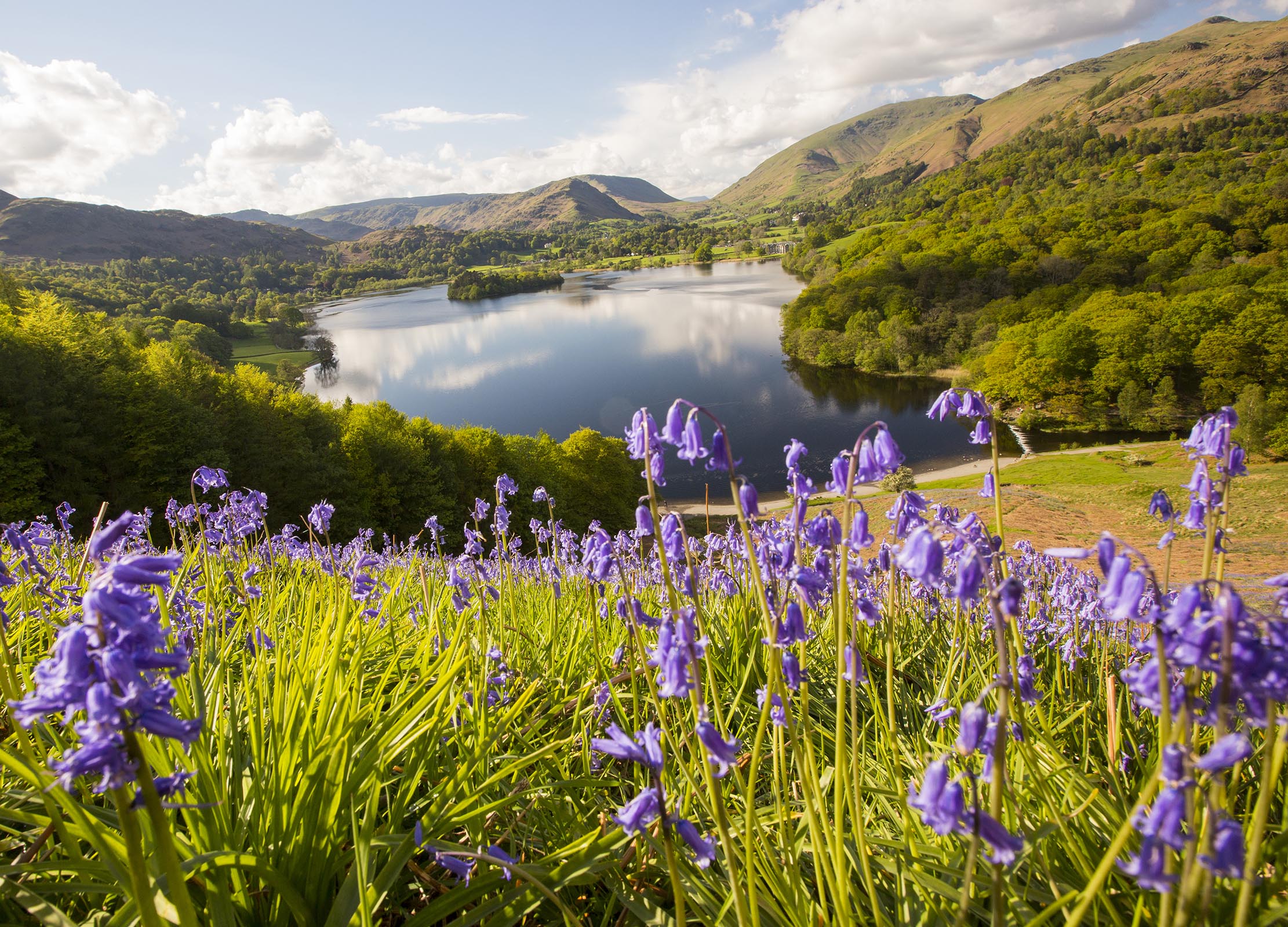 Curious Questions: How do you tell the difference between a British bluebell and a Spanish bluebell?
Curious Questions: How do you tell the difference between a British bluebell and a Spanish bluebell?Martin Fone delves into the beautiful bluebell, one of the great sights of Spring.
By Martin Fone Published
-
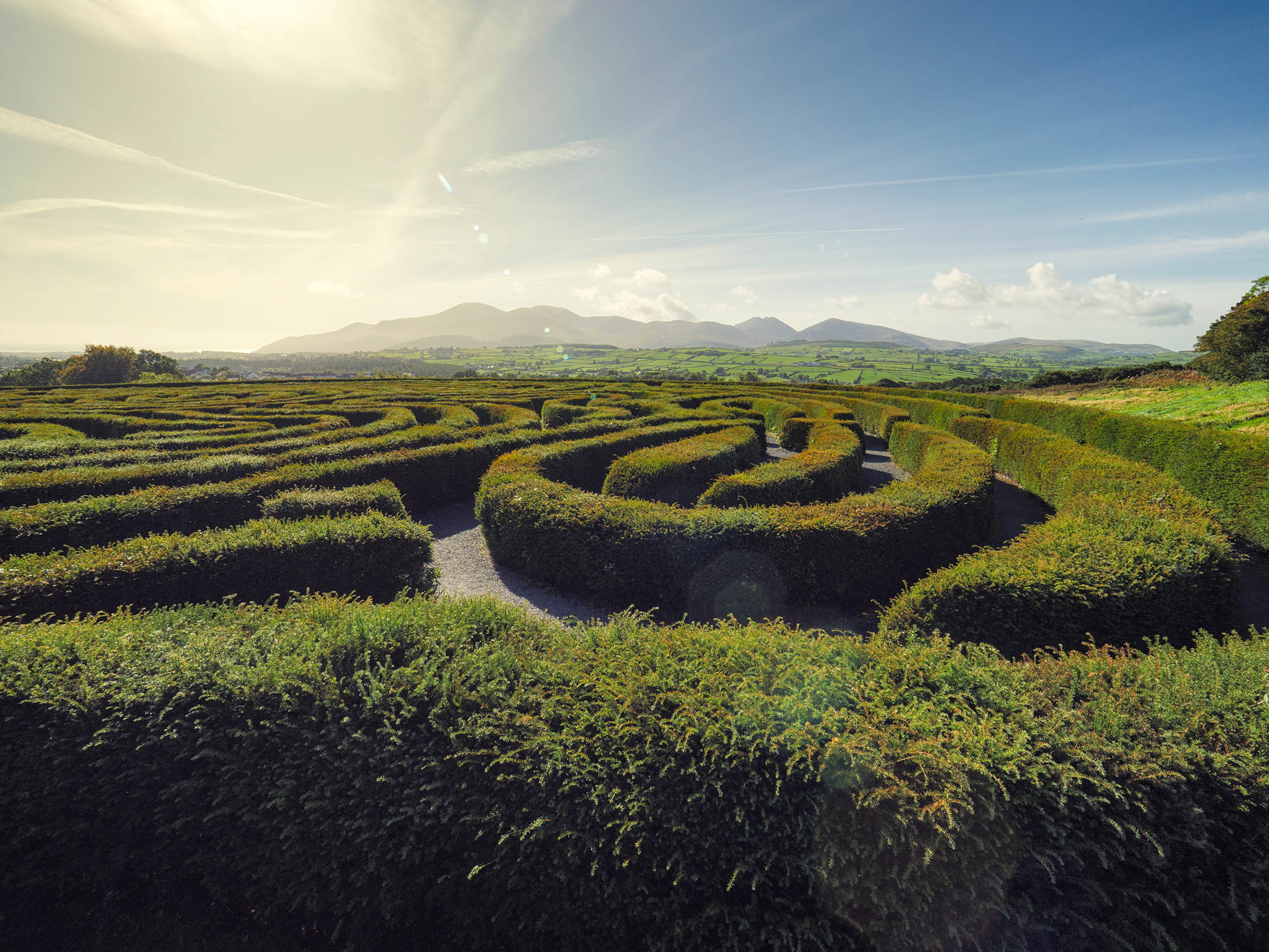 Curious Questions: What's the difference between a labyrinth and a maze?
Curious Questions: What's the difference between a labyrinth and a maze?You may never have thought to ponder what distinguishes a labyrinth from a maze. But as Martin Fone explains, it's something of a minefield.
By Martin Fone Published
-
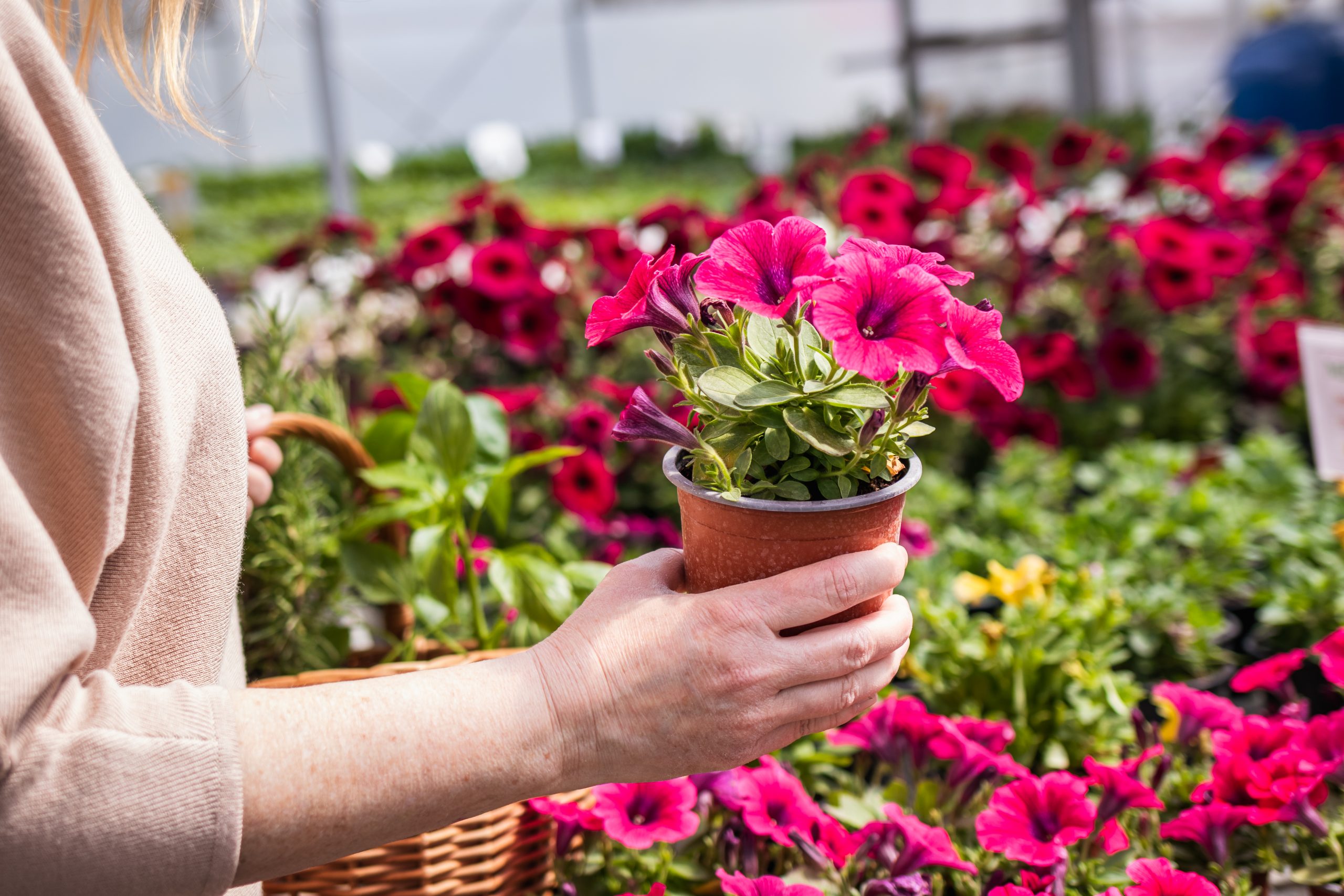 Curious Questions: Which came first — the plastic flower pot or the garden centre?
Curious Questions: Which came first — the plastic flower pot or the garden centre?Martin Fone takes a look at the curiously intriguing tale of the evolution of nurseries in Britain.
By Martin Fone Published
-
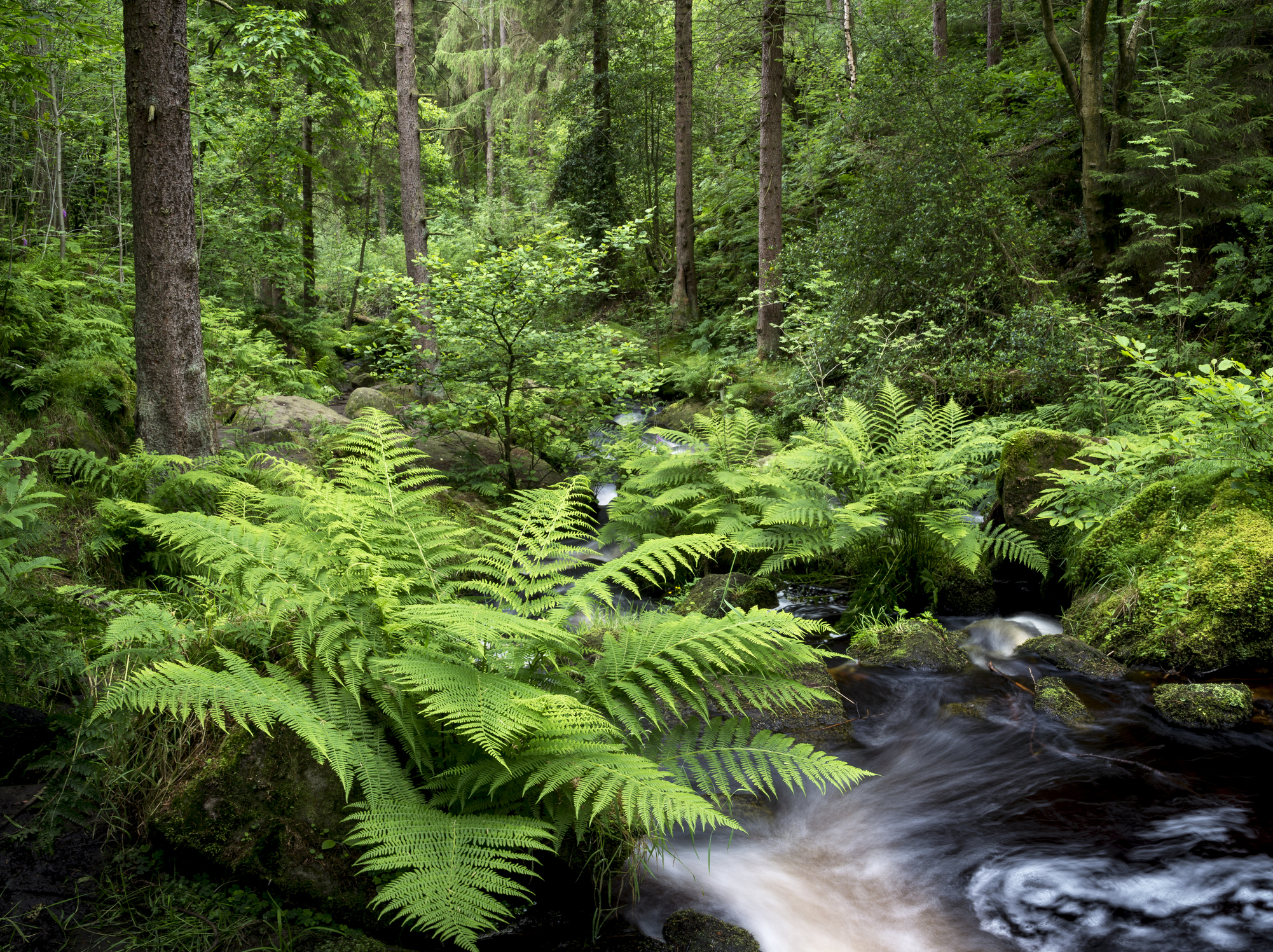 Curious Questions: Why were ferns considered magical?
Curious Questions: Why were ferns considered magical?Martin Fone considers the beautiful and ancient fern, once commonly held to have mysterious properties.
By Martin Fone Published